A recent study shows that 77% of individuals use search engines to begin their patient journey. Despite these statistics, most healthcare organizations need help to rank their website content on SERPs.
Invisibility in SERPs negatively impacts your ability to draw in new patients, build an online reputation, and compete against other organizations.
To overcome these difficulties, you require effective healthcare SEO strategies and tools for website optimization to help address your patients’ specific needs.
This article will walk you through everything you need about healthcare SEO. Here’s what we’re going to cover:
- What is healthcare SEO?
- The benefits of Healthcare SEO
- 11 steps on handling healthcare SEO effectively
- What is HealthCare SEO?
- What Are the Benefits of Healthcare SEO?
- 11 Actionable Steps On How To Do Effective Healthcare SEO
- 1. Post Thoughtful, Informative, and Relevant Content
- 2. Interlink Your Webpages
- 3. Optimize Your Headlines, Images, and HTML Tags
- 4. Build a Sitemap to Ensure Google Crawls and Indexes Your Website
- 5. Monitor Your Site’s Speed and Mobile Responsiveness
- 6. Optimize Your Google Business Profile
- 7. Add Local Business Schema To Encourage More Details to Show Up
- 8. Build Citations and Directory Listings For Local SEO
- 9. Build Backlinks
- 10.Create High-quality, Informative About Us and Contact Us Pages
- 11. Monitor your SEO Progress
- Final Thoughts On Healthcare SEO
What is HealthCare SEO?
Healthcare search engine optimization is a set of strategies that aim to improve a healthcare website’s visibility on search engines. These strategies entail optimizing web page structure and creating engaging, informative content that resonates with search engines and patients.
This article will delve into all these strategies sharing best practices and actionable steps to optimize your healthcare website for search engines.
What Are the Benefits of Healthcare SEO?
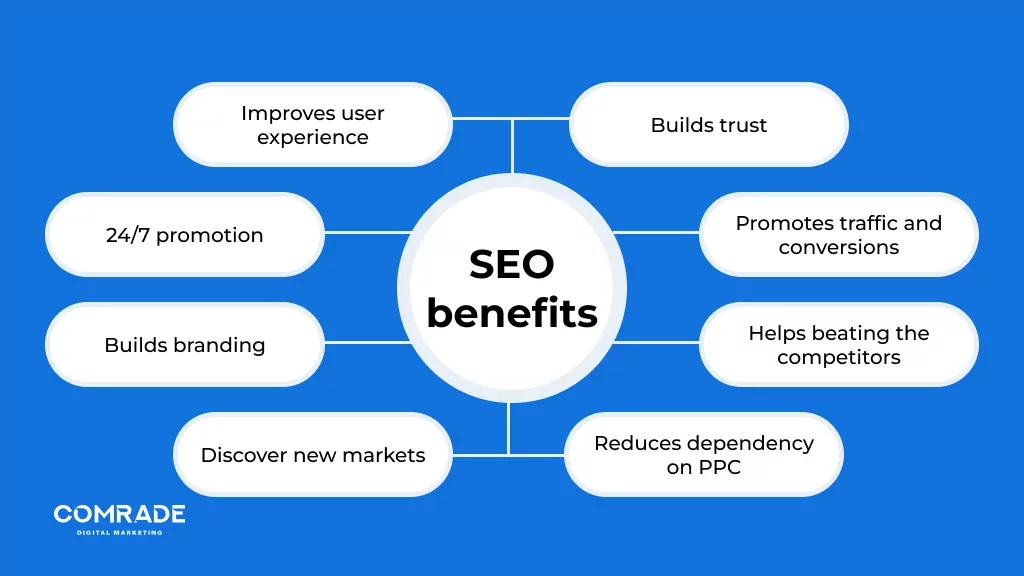
Patients are increasingly using search engines to search for healthcare information and physicians. According to a recent report, 94% of Americans use search engines to get information on specific medical conditions.
This is why healthcare providers need to invest in healthcare SEO, as it offers numerous benefits such as:
1. Increases Online Visibility and Drives Traffic to Your Site
Optimizing your website’s content for search engines ensures it ranks well on SERPs for relevant search queries. When users look up healthcare information and services on search portals, they usually click on sites at the top of SERPs.
When your site’s rankings improve, you’ll attract more clicks, resulting in more site traffic. This traffic can include new and returning visitors interested in the organization’s services or information.
Providing valuable content helps engage these visitors, encourages them to explore additional pages, and potentially converts them into patients.
Healthcare SEO also increases online visibility through the use of local SEO tactics. Incorporating location-based keywords and creating a Google My Business listing for your healthcare organization improves its visibility in local search results.
This is particularly important for facilities that serve a specific geographic area, such as a local hospital or medical clinic.
2. Generates Leads and Patients at a Lower Cost Than Running Ads
Healthcare SEO can generate leads and patients at a lower cost than running ads. Unlike paid advertising, which requires ongoing investment, healthcare SEO is a long-term investment.
When healthcare institution invests in SEO, it allows them to optimize their website, create conversion content, and improve their rankings, making it easier for potential patients to find them.
Running ads can be costly to generate leads and patients as healthcare organizations would have to pay for ad space on search engines and social media platforms.
Moreover, no guarantee running ads will generate a return on investment as most people ignore ads and rely on organic search results to choose a healthcare provider. According to a recent study, 70% of users like getting to know a company through content rather than ads.
SEO also levels the playing field for smaller healthcare facilities, allowing them to compete with larger healthcare organizations for less. With Healthcare SEO, small and mid-sized healthcare institutions enhance their online presence, attract more patients, and generate leads without spending much on advertising.
3. Educates Many Potential and Current Patients, Thus Building Trust
Using SEO, you can educate potential and current patients; thus, you’ll build trust and establish yourself as an authority.
SEO can help you create informative and engaging content that resonates with patients, and they’ll view your site as a reliable healthcare information source. Targeting specific keywords related to your services will help attract patients seeking healthcare information and services.
Healthcare SEO can help you educate patients about various healthcare topics, like preventative care, treatment options, and disease management, which can assist them in making informed decisions about their health.
Incorporating Healthcare SEO in your overall optimization marketing can also help improve customer satisfaction by allowing you to address their concerns.
11 Actionable Steps On How To Do Effective Healthcare SEO
For healthcare institutions to enhance their online visibility, attract more people, and establish themselves as a trusted authority, they must have an effective healthcare SEO strategy. Here are 11 actionable steps that can help healthcare providers implement effective strategies to help boost their rankings:
1. Post Thoughtful, Informative, and Relevant Content
Since healthcare websites provide information related to people’s health, they fall in the YMYL (Your Money or Your Life) category. Google uses EAT (Expertise, Authoritativeness, and Trustworthiness) guidelines to evaluate the content quality on such websites.
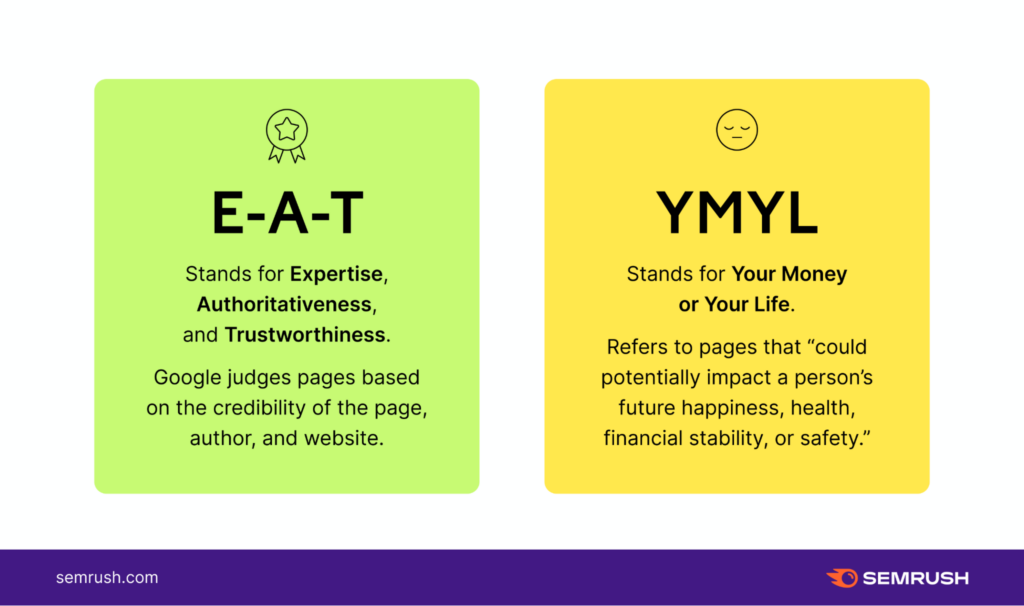
This is because these sites offer information that can significantly affect a person’s life. Data from recent research indicates that 60% of internet users click through and visit sites with relevant healthcare information.
For a healthcare website to establish EAT, it must create high-quality and informative content that includes expert quotes and studies to demonstrate its expertise and authority in a particular field.
The content should be well-researched, accurate, and up-to-date. Additionally, healthcare providers should establish credibility by offering accurate details about their experience, qualifications, and services by displaying certifications, awards, and patient testimonials and reviews on their sites.
Highlighting author details with their accreditation is also essential, as users are more likely to trust content from a credible source. Since healthcare affects people’s lives, individuals are usually cautious about the information they get online.
Providing author information and accreditation helps build trust with your audience since it demonstrates that the content is from a trustworthy source. Further, including author details can also help your site rank higher on search engines.
The EAT guidelines highly emphasize author details and credentials, especially for healthcare content. Including this information can help improve your content’s quality, thus increasing your visibility.
2. Interlink Your Webpages
Interlinking web pages refer to linking one page on a site to another page on the same site. Interlinking is achieved by incorporating hyperlinks in a page’s text or using navigation elements like tabs, buttons, or menus.
People usually enhance navigation and user experience, distribute link equity, and improve ranking on SERPs. link pages to When pages are interlinked, it creates a network of related content that establishes a site’s topical authority and relevance, resulting in increased engagement and better user experience, ultimately improving a site’s ranking.
Interlinking pages also helps search engine crawlers navigate and index your site more efficiently, improving its visibility on SERPs. Data from research conducted by Moz indicates that pages with a robust interlinking structure rank higher than those with a poor interlinking structure.

To improve the user experience on your site, use descriptive and relevant anchor text to link to other pages on the site. For instance, rather than “click here,” use descriptive anchor text about the linked page, such as “learn more about Orange County marketing agencies here.”
Another example of how you can link pages is if you’re a marketing agency offering various services like SEO and email marketing, you can interlink these pages using relevant anchor text like marketing questions to ask clients.
Organize the site’s internal linking structure using categories, tags, or related content to make navigating and finding relevant details easier for users. This also helps search engines understand the context of your site’s content.
Linking to related content in your site that provides extra information or the current page’s context improves user experience and helps search engines understand your content’s relevance and authority.
3. Optimize Your Headlines, Images, and HTML Tags
Headlines are the first thing visitors see when they land on a web page. They are essential in attracting users’ attention and encouraging them to read. Optimizing headlines for healthcare SEO entails using targeted keywords that accurately reflect the page’s content.
This helps improve the page’s visibility on SERPs pages and increases the likelihood of users clicking through to the website. For instance, if you have a web page about a digital marketing agency and want to optimize the headline for SEO, add a service location to get a digital marketing agency in Orange County.
Including these keywords can help you attract users looking for digital marketing agency services in Orange county when they put “digital advertising near me”, “digital marketing firms near me,” or “digital marketing near me” in their search bar.
Images are essential to healthcare content as they help illustrate medical concepts or demonstrate procedures and treatments. Optimizing images for your site’s content involves using alt tags that reflect the image’s content accurately. This helps improve the page’s accessibility and provides extra information for Google to crawl and index.
HTML tags, like title tags, meta descriptions, and header tags, provide additional information about the web page’s content to search engines. Optimizing these tags involves using targeted keywords and providing concise, accurate descriptions of the page’s content.
For example, if you want to optimize a web page about Orange County digital marketing, you can optimize the meta description At “At [Your Brand Name], we offer expert digital marketing in [City/State].
4. Build a Sitemap to Ensure Google Crawls and Indexes Your Website
A sitemap is a file that lists all the pages on your site and the essential details about them, like the URL. According to Google Search Central, creating a sitemap is essential as it helps ensure that Google crawls and indexes your site.
Offering a roadmap of all your website pages makes it easier for search engines to crawl and index your website and helps ensure that all of your content is discovered by search engines and is available for users.
A well-organized sitemap helps visitors navigate healthcare websites easily because pages are arranged in a logical hierarchy, making finding the information they seek easy. This can help in enhancing the user experience and engagement.
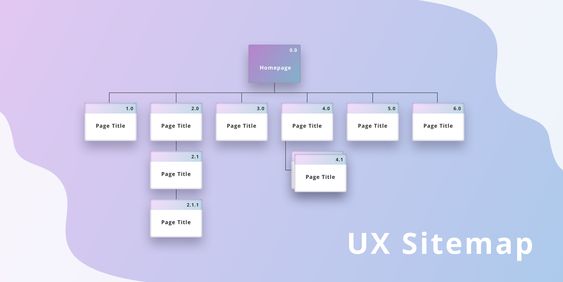
Various free and paid online tools can help you generate a sitemap, including XML and Google sitemap generators. Ensure you include all the pages you want to be included on the sitemap and organize them logically. Use descriptive and relevant URLs and update the sitemap regularly when you add new content to your site.
After creating a sitemap, submit it to search engines to ensure your site is crawled and indexed faster.
5. Monitor Your Site’s Speed and Mobile Responsiveness
Speed is a vital factor in user experience, as a slow-loading site can cause frustration that may make users abandon a site. According to recent research, 53% of users will leave a site that takes more than three seconds to load.
Fast-loading websites keep users engaged; thus, they spend more time on the site, resulting in better engagement metrics and improved rankings.
Since many users access the internet using their mobile devices, Google uses mobile-first indexing, meaning it uses a site’s mobile version for ranking and indexing. If your site isn’t optimized for mobile devices, it won’t rank well on SERPs.
The best way to evaluate your site’s performance is by using tools like Google PageSpeed insights. This tool helps site owners identify areas to enhance their speed and mobile responsiveness.
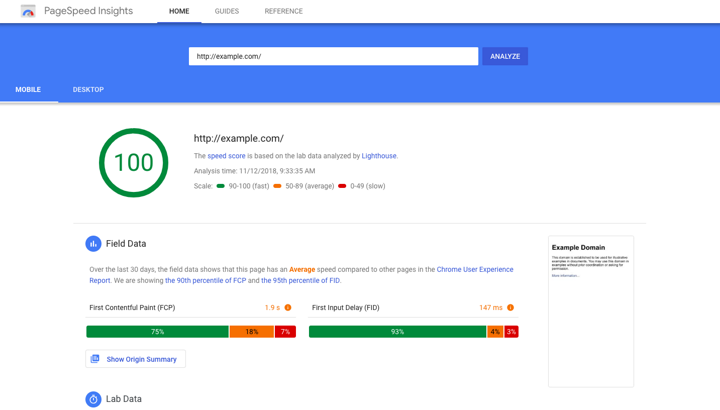
Improvements can enhance your site’s user experience, search engine ranking, and mobile responsiveness. To make your site more mobile responsive, ensure you use a mobile-friendly design optimized for mobile and that the site correctly displays on various devices.
Ensure the mobile website has all the essential content on the desktop version. Don’t hide content like images or text behind tabs, as this can negatively impact your ranking.
Additionally, don’t use large videos or images; compress files to ensure your site loads quickly.
6. Optimize Your Google Business Profile
The Google Business profile is a free tool that lets healthcare companies manage their online profiles across Google, including Google maps and search. Optimizing your Google business profile increases your visibility in local search results, making it easier for patients to locate you when searching for healthcare services in the area.
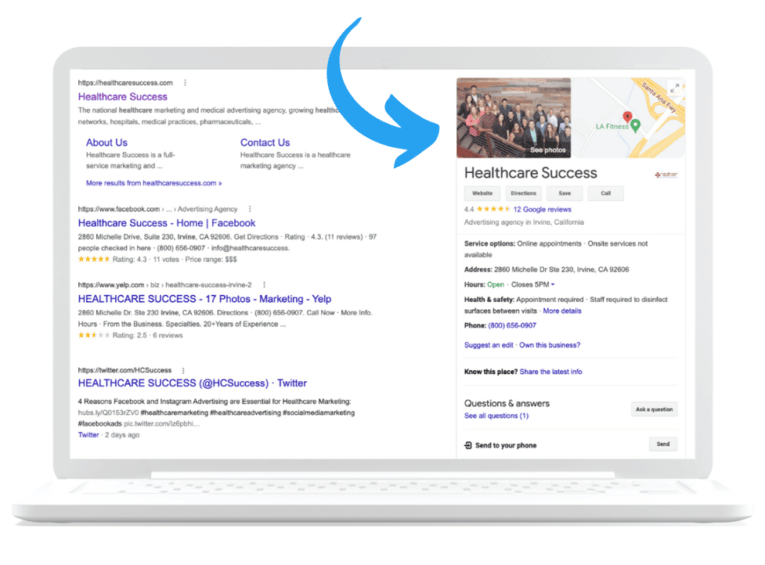
An optimized Google Business Profile also improves credibility by providing accurate and updated information like your business houses, contact details, and website. The platform also allows patients to leave reviews, which can help you attract new clients and improve your ranking.
According to Software Advice, 94% of prospective patients use reviews to gauge a healthcare facility’s practice. Healthcare organizations should strive to improve their visibility in local search results by getting into the Local 3-pack. This Google search feature displays the top three local businesses related to a search query.
For instance, when a user searches for a digital marketing agency nearby, they’ll type “social media management companies near me”, or “advertising agencies near me” in their search bar. Google will list the top three local digital marketing agency near their location, highlighting their names, addresses, phone numbers, and a map.
Getting into Local 3-pack is a process that entails claiming and verifying your Google Business Profile and ensuring it’s up-to-date. Provide accurate business details and high-quality images and optimize the site for local search by including relevant keywords and location details in your content and meta tags.
7. Add Local Business Schema To Encourage More Details to Show Up
Schema markup is a type of code that assists search engines in understanding your site’s content and displaying more detailed information in search results. Adding local business schema to your site can increase the chances of appearing in local search results and help potential clients find your healthcare facility.
Business schema can include details such as your business name, address, phone number, site URL, operating hours, business category, reviews, ratings, acceptable payment methods, social media profiles, images or videos related to the facility, and products offered.
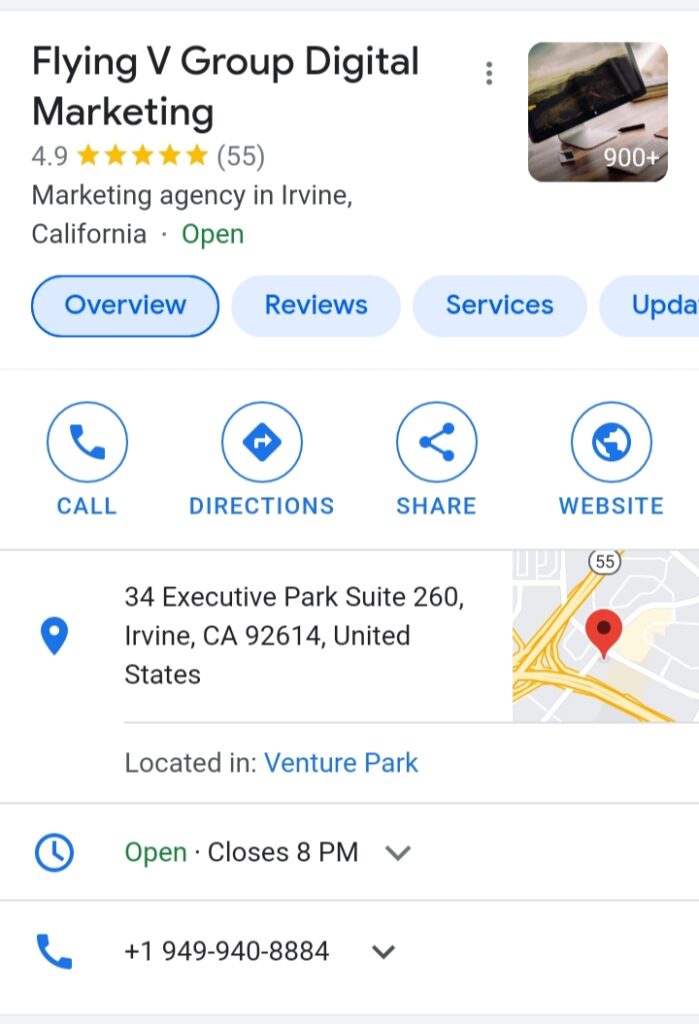
Having a local business schema helps search engines know that your site represents a local business, thus increasing the chances of it appearing on local search results when people search for healthcare services in your area.
Local business schema also adds details to your search result listing, which can assist prospective patients in finding and contacting your facility more efficiently. Research shows that 49.3% of users won’t book an appointment with a provider whose listings are incomplete.
8. Build Citations and Directory Listings For Local SEO
Creating citations and directory listings for local SEO entails having consistent online listings of your healthcare facility’s name, address, and phone number on various online directories and citation sites.
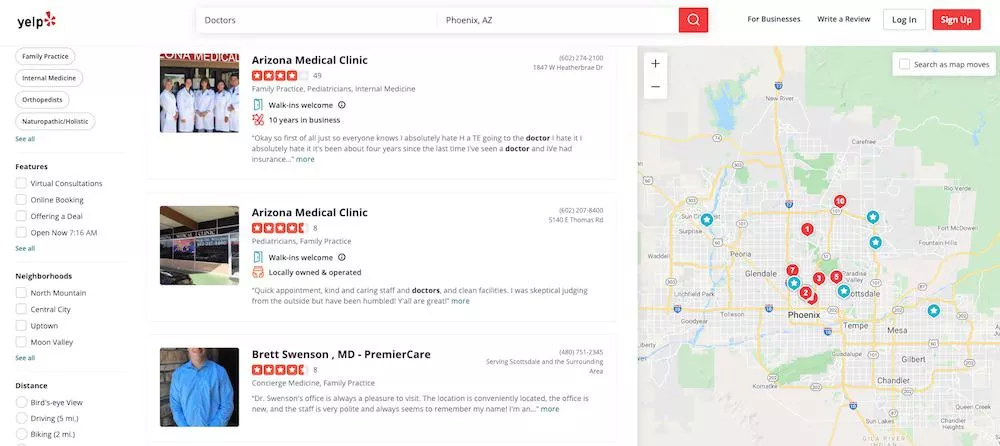
For instance, website designers can create citations and directory listings for local SEO by creating a Google My Business Profile containing details like the business name, phone number, and site URL, creating a profile on Yelp for reviews, and registering an account on Upcity, a site that offers a directory of website designers in Los Angeles.
Creating accurate and consistent listings on various citation sites and directories increases your local visibility, meaning prospective clients searching for healthcare services in your region are more likely to find you.
Citations and directory listings on reputable platforms can increase your facility’s credibility. Your company will also rank higher on local search results since Google uses your NAP’s (Name, Address, and Phone number) accuracy and consistency across various platforms as a ranking factor.
To create directory and citation listings for your site, identify the most popular and trusted online citation sites in your area and industry, fill out accurate and consistent business details, and update and monitor the listings regularly.
9. Build Backlinks
Backlinks are links from other sites to your site, and according to uSERP research, 65.7 % of SEOs believe link building significantly impacts search rankings. Search engines use the quality and number of backlinks on a website as a ranking factor.
The more high-quality backlinks a site has, the higher its rank on SERP. Backlinks from authoritative websites in your sector can enhance your website. When prospective clients see your site is linked to other reliable websites, they’re more likely to trust you and choose your services.
Backlinks from other sites can generate traffic to your website; if someone clicks on a backlink, they’ll be directed to your site leading to increased traffic. To build backlinks for your site, create high-quality and relevant content that other sites will want to link to.
This can include blog posts and infographics, or other resources related to your industry. Reach out to other sites in your locality or industry and request them to link to your content. Building relationships with other sites and offering value to their audience can also help attract backlinks to your site.
Backlink building should be done naturally and ethically and not using spammy tactics that can harm your website.
10.Create High-quality, Informative About Us and Contact Us Pages
When creating an “About us” or “Contact us” page for your business, ensure it aligns with Google’s EAT principles. Provide details about your facility’s history, mission, values, and your staff’s qualifications and experience. You should also include any industry awards or recognition your facility has received.
Providing adequate information about us and contact pages helps build trust with your audience. Consider adding patient reviews or testimonials on the about us page to demonstrate your commitment to offering high-quality care.
According to Software Advice, 90% of patients use reviews to gauge a healthcare provider’s quality. Highlight your unique selling points, whether it’s a focus on patient care or specialized treatment options.
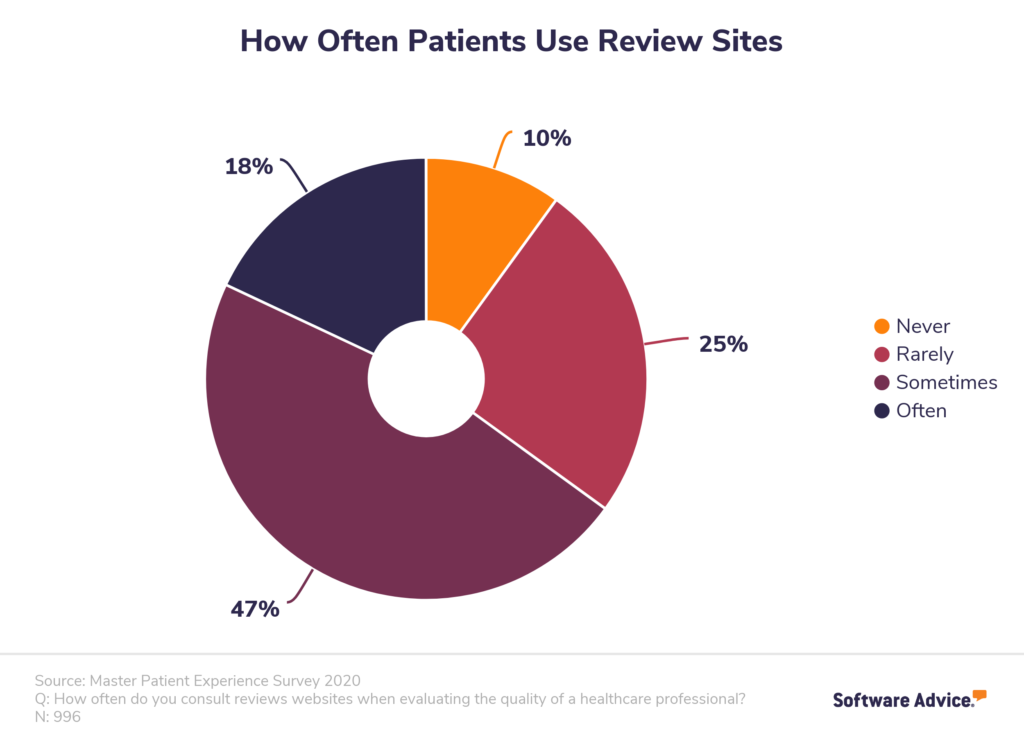
When creating high-quality and informative “About us” and “Contact us” pages, consider incorporating some local SEO keywords to increase the chances of your organization appearing on local search results and attracting prospective clients in your area.
Some keywords you can incorporate include:
- The treatments you offer
- Your staff and their expertise
- Insurance you accept
- Patient-centered care
- Urgent care
- Telemedicine
- Preventative care
11. Monitor your SEO Progress
Tracking your SEO progress ensures that your site performs well and attracts prospective clients. Monitoring your progress helps you identify areas that need improvement and helps you make data-driven decisions for your healthcare SEO strategy.
Monitoring the keyword rankings for the keywords you’re targeting can help you determine how well the site is performing in SERPs. This will help you determine if your SEO strategy is adequate or if you have to adjust it.
![]()
When you monitor your website’s progress, you’ll be able to know the number of users visiting your site and demographics, thus helping you understand them better. Tracking progress also helps identify which pages are performing well and generating conversions and which ones need improvement.
Google Analytics, SEMrush, and Ahrefs are some of the best rank-tracking tools to help you gain insights into your SEO strategy performance.
Final Thoughts On Healthcare SEO
Healthcare SEO involves using multiple and best SEO content strategies to help your healthcare website increase its online visibility, generate traffic and leads, build trust, and ultimately attract patients to your facility.
Healthcare SEO is an ongoing process that needs constant effort and monitoring, and by implementing the steps in this article, healthcare facilities can improve their rankings on SERPs. Healthcare organizations should invest in SEO to stay ahead of the curve and reach prospective clients when searching for healthcare services online.






0 Comments